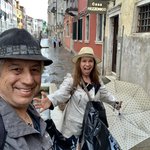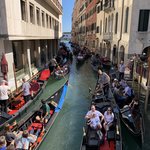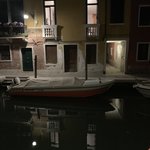
Best Things To Do in Croatia

#1 Indulge in Dubrovnik

Beautiful Dubrovnik is best known for the defensive City Wall that surrounds its Old Town. No visit to the UNESCO World Heritage City is complete without a trek to the top of the ancient rampart. Shooting selfies against a backdrop of ocean vistas and red-tile rooftops has become a ritual for those who climb the steep stairs. The wall is a setting for King’s Landing scenes on the HBO series “Game of Thrones” and a location for scenes in the upcoming “Star Wars VIII.”
But Dubrovnik is much more than its wall. The city’s true treasures lie inside the Wall’s confines. After all, the 82-foot-high, 6-foot-thick fortification was built to protect something.
That “something” is a collection of 15th and 16th-century monasteries and museums, churches and fountains, sculptures and palaces. They are worth an afternoon of walking the Stradun to see them. Be sure to venture off the wide, polished limestone pedestrian path to a spray of narrow alleys loaded with fascinating nooks and crannies where galleries, shops, and landmarks such as Europe’s second-oldest Judaic house of worship, are waiting to be explored.
When the sun goes down, Old Town’s casual crowds morph into beautiful people. They dress up and head out to dine, go to clubs or concerts or promenade on the Placa, which vibrates with life and music into the wee hours.
Expert tip: Visit Dubrovnik during its 67th Libertas summer festival from July 10-August 25, 2016. The annual celebration of the arts is presented in venues that are works of art themselves: Shakespeare will be performed at Fort Lovrijenac, (loave-rih-yen-ats,) a writers’ forum is scheduled on the island of Lokrum (low-crume) , and opera will ring out in front of St. Blaise Cathedral, plus much more.
#2 Hike Through Plitvice Lakes National Park

This UNESCO World Heritage site is a 12,000-acre Garden of Eden with waterfalls of all shapes, sizes, and configurations that connect its 16 crystal clear turquoise lakes. Meandering into forests and rock formations is an adventure. Keep an eye out for the deer, wolves, wild boar, and bears that live in the park.
Tip: Read about Unique Ways to Experience Plitvice
Ask for a park map in English at the entrance. Off-trail hiking is not allowed at Plitvice, and visitors must stay on the meticulously groomed hiking routes to avoid disturbing the environment and because a wrong turn could mean an extra hour of walking—mostly uphill—to your destination. The routes include well-marked gravel and rock paths and planked walks, some with steps. Use the universal directional signs or the park map to create DIY itineraries that can take as few as two or as many as eight hours to complete. Some paths are wheelchair accessible giving even the less physically fit the access they need to visit Veliki Slap (pronounced vell-eek-ee slap, it means Big Waterfall) and Prošćansko (prosh-sahn-skoea), Plitvice’s highest and largest lake. In addition, eco-friendly buses run regular routes to and from the park’s major sites.
You can spend a couple of hours or an entire day exploring Plitvice. When it’s time to turn in for the night, head outside the park to find campsites, hotels, and private accommodations to spend more time immersed in Plitvice’s beauty. Camping is not allowed on the grounds.
The park is an easy day trip from Zagreb, where many escorted park tours originate. When you get hungry, grab a “lamb (or pork) on a stick,” spit-roasted meat prepared by vendors who line the roads that run past the park.
Expert tip: For a more substantial meal, go to Lička Kuča (leech-kah cooch-ah), where meat is cooked over coals and under a dome, the traditional Croatian Peka (peck-ah).
Chat with a local specialist who can help organize your trip.
#3 Eat (and Drink) Your Way Through Istria

Istria long has been recognized as the cradle of the country’s hospitality and food and wine industries. Vineyards, olive groves, food forward restaurants, local delicacies, art, and music festivals thrive here. Add a stunning Venetian-style coastline, hilltop towns, Roman ruins, and a joie de vivre that stems from its deep Italian roots, and Istria is one of the best places in the world for discovering, relaxing, and indulging.
It would take a week to thoroughly experience everything this triangular-shaped peninsula has to offer. What follows is a handful of suggestions for finding Istria’s bests.
- Poke around the Pula’s (pool-ah) 2nd Century amphitheater and its underground museum or take in an evening concert from the stone stadium seats.
- Hop on a water shuttle to tour the artifacts at Briunji (bree-une-ee), Tito’s private resort island.
- Drink in the beauty of Rovinj (roe-veen-yah), Croatia’s most photographed town.
- Marvel at the intricate mosaics crusting Poreč’s (pore-etch) Euphrasius Basilica, another of Croatia’s seven UNESCO World Heritage sites.
- Go spelunking at the nearby Baredine Cave.
- Visit Hum (whom) the world’s smallest town or dine at Zigante (jig-ahnt-ae), where the world's largest white truffle and the man who found it reign.
- Pop into Pazin’s ethnographic museum and see the chasm that inspired Jules Verne’s "Mathias Sandorf."
- Drive to tiny Beram and approach a villager to take you to St. Mary of the Rock, deep in the woods. The vibrant “Dance of the Dead” fresco inside is still alive with color.
- Get a map showing Istria’s wine and olive oil roads and spend a day (or two or three) tasting and even picking a few grapes and olives.
Expert tip: There are no bad meals in Istria. Rule of thumb: The tinier the konoba (café), the more authentic and delicious the food.
#4 Get Your Feet Wet

With more than 1,100 islands off the mainland, Croatia is a watersport enthusiast’s paradise. Sailing, windsurfing, SCUBA diving, snorkeling, swimming, and just splashing around in clear blue water are Croatian obsessions.
To a Croat, a beach is wherever land meets the water. One area, Kornati National Park off the coast of Šibenik (she-ben-ick) in the middle of the coastline, is special. The roughly 150 islands that make up Kornati are mostly barren above ground. Its much sought-after feature is a submerged mountain range rich with breathtaking underwater rock formations and fish species. If you are into snorkeling and/or SCUBA diving, head to Kornati.
Expert tip: All SCUBA divers must be certified by the National Park to explore the diving areas of Kornati. If you want an authentic experience, spend a night in a cottage that Kornati sheepherders and farmers use as temporary shelter.
#5 Go Zen in Zadar

The fifth-largest city in Croatia is perhaps the country’s most eclectic. Its Riva (waterfront promenade) is long and wide. At night, it is jammed with people strolling, vendors selling food and trinkets, Klapa (klah-pah) performers singing acapella, and jugglers swallowing fire. Find a spot at one end of the Riva to watch the ferries bound for Italy and other destinations arrive and depart.Then head to the other end and listen to the gently haunting melodies of Nikola Bašić’s Sea Organ (bah-sitch). This clever instrument uses the wind, tides, and ship wakes to produce one-of-a-kind sounds. It is unique, as is its light-show sister installation, Greeting to the Sun, also designed by Bašić and positioned so you can experience both displays simultaneously.
Expert tip: For a multi-sensory experience, go to the Riva 30 minutes before sunset and watch what Alfred Hitchcock once proclaimed the world’s most beautiful sunset.
#6 Shop the Market

Every community in and around Zagreb has a permanent open-air market where homemade cheese, pickles, and all sorts of produce, meat, and fish are sold. None is closer to pure theater than the show under the signature red umbrellas of Zagreb’s Dolac (dole-ahtch) Market north of the city center, Jelačić Square (yell-ahtch-its). Browse the stalls and watch the vendors selling their fruits and vegetables and everything from soap powder to caviar.Or find a spot to sit while you sip a cup of bijela kava (white coffee) and eat a slice of cherry strudel. When you’ve had your fill of watching old women in babushkas go toe to toe with manicured women in designer clothes over a chicken, walk half a block to Tkalčićeva (ti-kahl-chee-chay-vah) Street where bars, restaurants, boutiques, and a robust social scene abound
Or find a spot to sit while you sip a cup of bijela kava (white coffee) and eat a slice of cherry strudel. When you’ve had your fill of watching old women in babushkas go toe to toe with manicured women in designer clothes over a chicken, walk half a block to Tkalčićeva (ti-kahl-chee-chay-vah) Street where bars, restaurants, boutiques, and a robust social scene abound
Expert tip: Go early to get the best produce. Go just before closing (2-3 pm) to get the best bargains. Vendors slash prices late in the day so they don’t have to carry their leftovers home.






